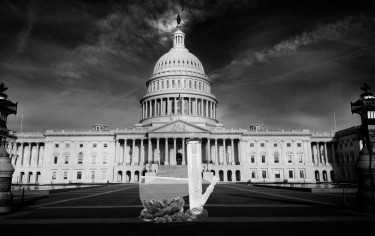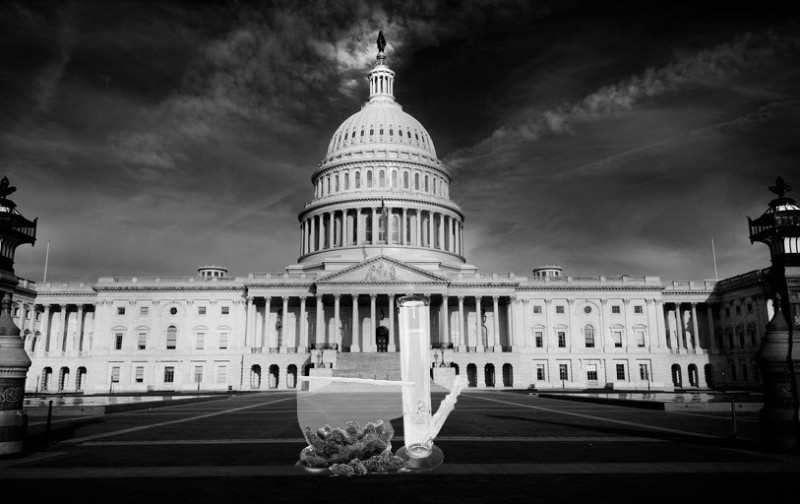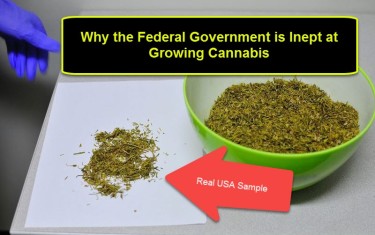
It's official! The five-decade-long federal monopoly on cannabis production has been broken by Groff North America Hemplex and the Biopharmaceutical Research Company (RBC). Never before has an institution outside the University of Mississippi produced research-grade cannabis. Things are starting to look up for federal cannabis reform with the removal of this monopoly.
These two companies announced that they successfully harvested cannabis from their experimental sites in the last few weeks. In early 2021, the Drug Enforcement Administration (DEA) gave its blessings to both companies to go ahead and establish a grow section for cannabis research.
Ending a Monopoly
Since 1971, a single facility at the University of Mississippi has been in charge of producing cannabis plants for research purposes at the federal level. This monopoly prevented other facilities (public and private-owned) from growing marijuana for experimental reasons. In 2016, the DEA began to remove the monopoly on marijuana for medical research. Finally, they achieved what they set out to do in May 2021.
The applications of several cannabis companies were approved by mid-2021. Groff Hemplex and the Biopharmaceutical Research Company revealed that they have been fully registered in the DEA database and have started cultivating cannabis plants. The first phase of harvest, which started about a month ago, will be forwarded to research facilities. Marijuana researchers across the country have commended this development.
George Hodgin, CEO of BRC, commented that this move is a start to better developments in the industry. The production of cannabis within the BRC facility will increase innovation in the federally legal cannabis industry. He also noted that the DEA granted everything requested for the concept.
"The move will result in an increased production of regulated substances like cannabis across the country," said Hodgin. He also acknowledged the roles played by cannabis advocates over the past fifty years. None of these incremental steps would have taken place without the loud drum beats made by these folks. It is also good to see that the DEA is in charge of this large-scale production of cannabis for research.
Medical Cannabis Research Is Advancing
One of the reasons why the federal cannabis industry has remained stagnant for some years is the insufficient amount of information that has been gathered about cannabis. The Mississippi facility could not produce enough high-quality plants needed for the critical research. For the United States of America, having only one legal source of research on cannabis for more than fifty years wasn't good enough. There were many lawsuits and complaints registered to overturn this situation, but they went unanswered.
Cannabis advocates have criticized this needless monopoly for many years. These groups write letters to agencies explaining how the limited research hinders serious research. Most of the plants produced by the Mississippi facility were sub-par. They were also chemically different from products sold in dispensaries across the country. Hence, they were really of little use.
Requests were made by the DEA to the Obama administration to end Ole Miss' monopoly, but it was rejected. The same thing happened during the Trump administration. Despite the President's aversion to cannabis reform, the Biden administration eventually approved the DEA's persistence in requesting applications for additional cannabis cultivations.
A Crucial Milestone
BRC completed its first harvest in November. In a few weeks, they'd start work on harvesting the second batch of cannabis at the facility. The Groff site finalized its first phase of harvest some days ago.
The federal cannabis industry can now boast of quality cannabis materials being used in its cannabis research labs. The results of experiments can also be linked to mainstream cannabis sold in dispensaries in legal states.
In a statement, Nora Volkow, Director of the National Institute on Drug Abuse (NIDA), suggested that these new facilities investigate the chemical properties of medicinal cannabis in dispensaries to know the exact type of cannabis to supply. This would help build on available information on the benefits and risks of common medical cannabis products.
More to come
The DEA has also approved applications from universities and interested cannabis farmers keen on being federally registered under the national grow program. The DEA will authorize these new facilities to manufacture marijuana for medical research purposes only.
Groff and BRC are only permitted to cultivate marijuana crops for calibration purposes and internal quality control. In time, these two operators will be approved to sell their harvests to the DEA to be dispensed for drug development and other clinical research.
According to Frank Haughton, CEO of Brighterside Vertical Farms (one of the farms contracted by Groff to produce cannabis), this current arrangement mainly demonstrates that cannabis can be made by many facilities, like every other drug ingredient. He added that everything was going according to plan. The DEA is seeing proof that the concept can create a pathway for a regular supply of cannabis. If these experiments yield positive conclusions, Groff could become a domestic supplier of cannabis, as long as FDA approval is issued.
Other arrangements have been made with several scientists to hasten the expansion of product development sites.
Supporting Marijuana Research
The DEA's interest in the cannabis industry will motivate other agencies to support marijuana research and decriminalization. This year, a new bill will be pushed through Congress to authorize fatally ill patients to be treated with psilocybin. The DEA proposes that the substance be used as an investigational treatment without the fear of penalties.
The Biden Administration is focused on making the research criteria for schedule I drugs the same as those for schedule II drugs. Cannabis advocates and lawmakers have emphasized that the current guidelines for researching Schedule 1 drugs are harsh and prevent essential research. Once the criteria are kept at the same threshold, researchers will have more freedom to investigate cannabis properties.
Bottom Line
Yearly production quotas of Schedule 1 drugs (marijuana and psilocybin) will rise this year. The DEA has expressed its commitment to promoting cannabis research and calling for higher production yields. The agency will be directly involved in producing marijuana and psychotropics to develop efficient medications in preparation for a federal cannabis medical program.
WHERE THE US GOVERNMENT GETS WEED FOR TESTING, READ MORE...
THE US GOVERNMENT APPROVES PRIVATE GROWER RESEARCH LICENSES!







